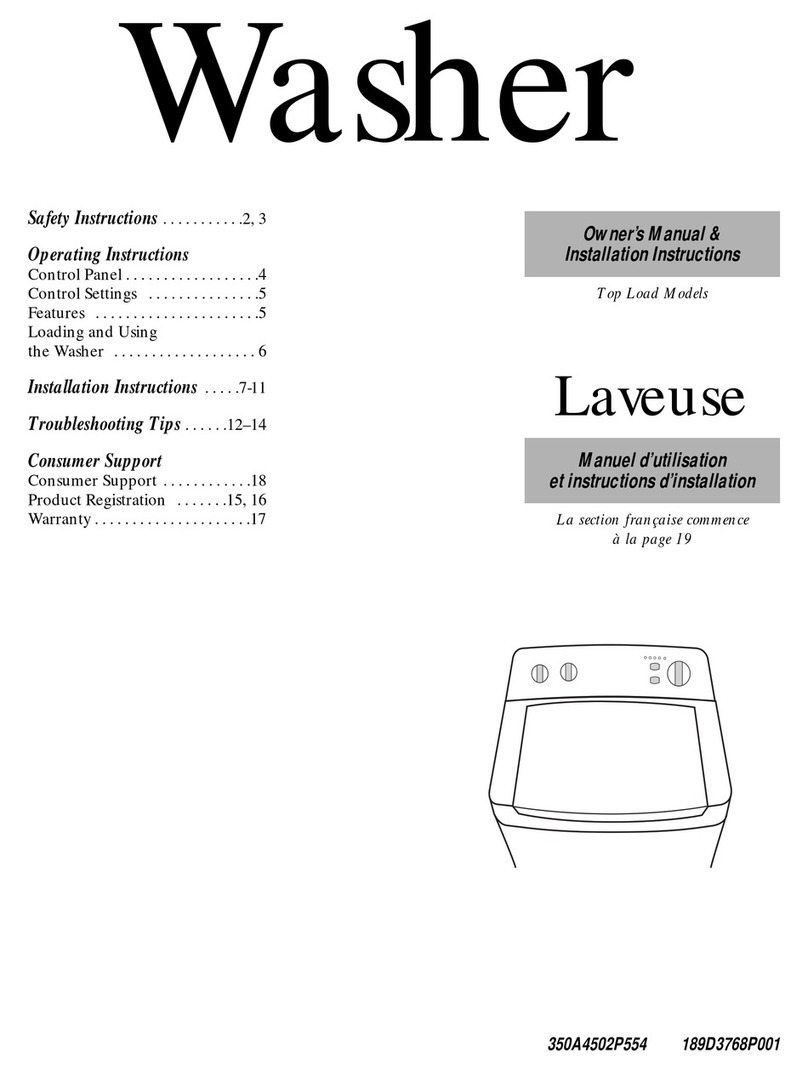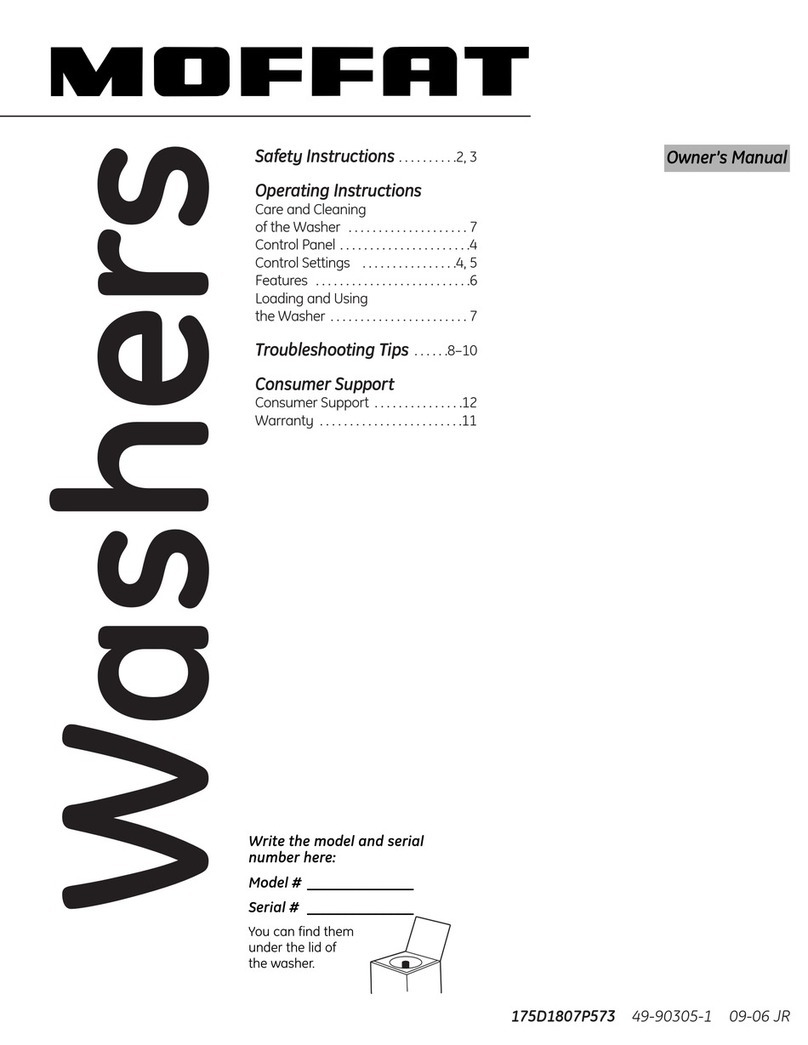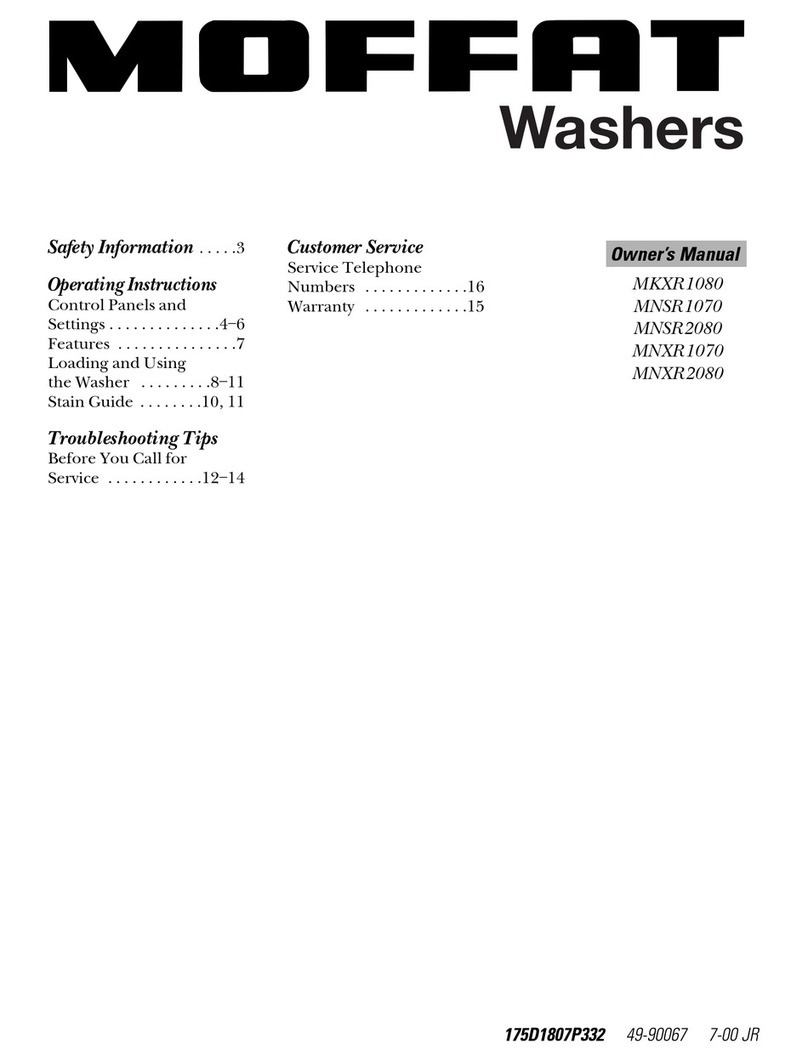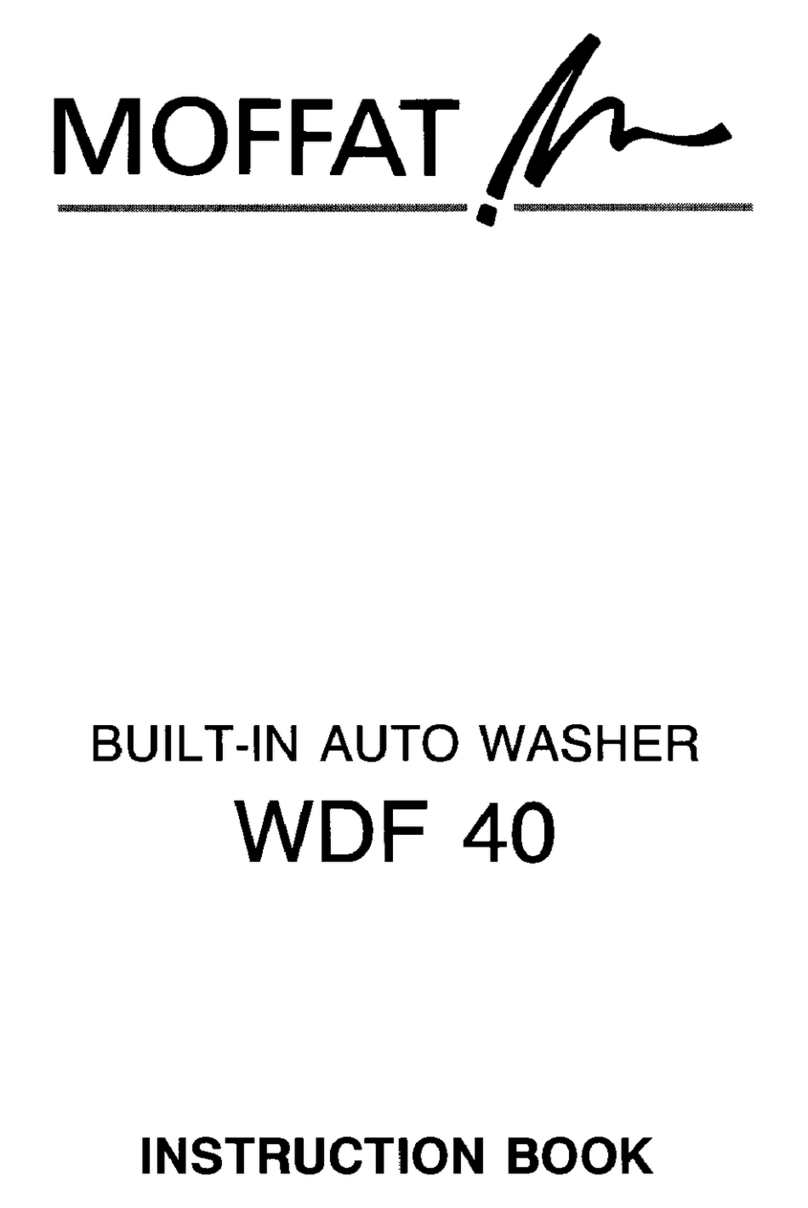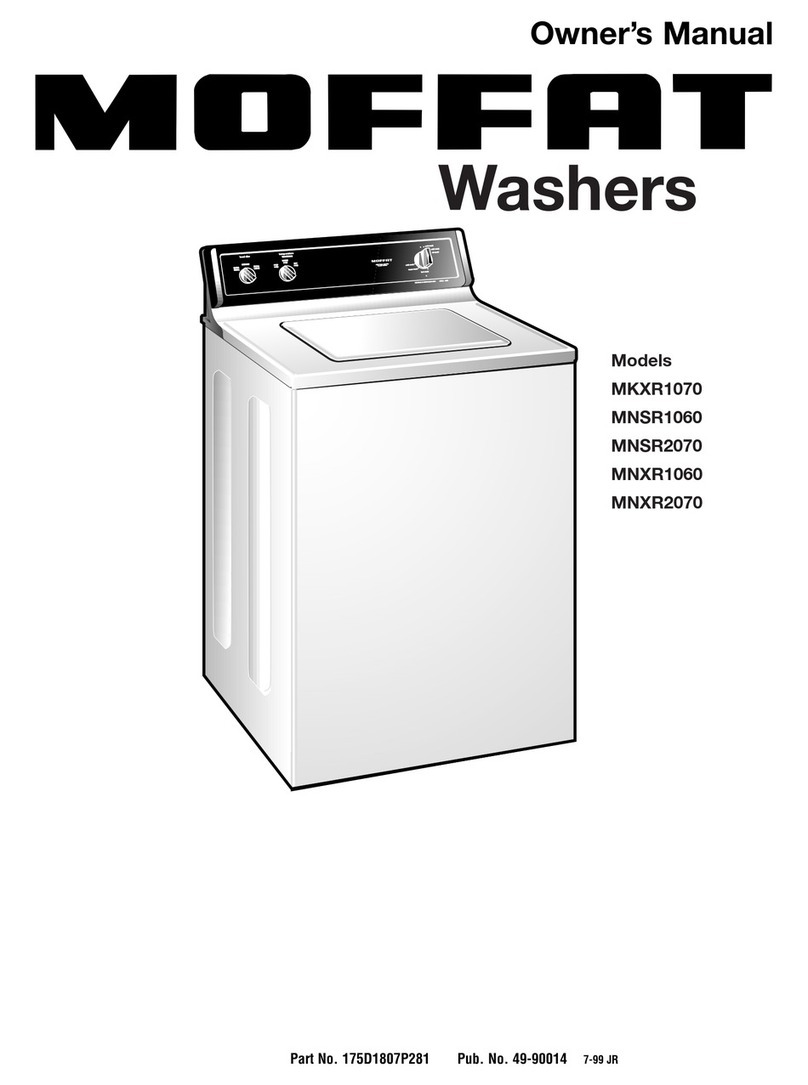INSTRUCTIONS FOR USE
Instructions for Use
4
Important
Before putting the machine into use, don't
forget to remove the transport brackets.
Switching on a blocked machine may damage
the machine. Our guarantee does not cover
such damage.
•Before switching the machine on, check that
the transport brackets have been removed.
•Don't place the appliance in a room where the
temperature may fall bellow 32°F, causing
individual parts of the machine to freeze and
become damaged (hose may crack).
•The appliance should stand firmly and
horizontally on a solid base (a machine
standing on an uneven floor is very likely to
vibrate during the spinning cycle).
•Always consider the instructions for correct
placement and installation of the machine to the
electrical and water supply. This will help you
avoid accidents and protect your machine
against damage.
•The appliance my not be built-in under the
kitchen worktop in a row of cabinets,
because the use of the appliance without
the top cover is not allowed for safety
reasons. Likewise, the removal of the rear
panel and the bottom of the appliance are
also not allowed.
•The appliance should be positioned in such way
to provide normal ventilation.
•The appliance is to be connected to the water
mains using new hose-sets and that old hose-
sets should not be reused.
•The end of the outlet hose should not be
immersed in the discharge water (the machine
may pump the discharge water back).
•During the washing cycle, the door of the
machine cannot be opened. (safety feature)
The door will remain locked for (approx.) 2
minutes after the wash cycle has been
completed.
•The glass door can get very hot during wash
programs, always exercise caution and do not
allow children to come into contact with door.
•Use only washing powder and other agents
specially designed for machine washing.
We do not take any responsibility for damage
caused by the improper use of bleaching or
coloring agents (colored gasket and other
plastic parts).
•Lime dissolving agents contain acid, so only
use those containing rust-protection agents.
Always consider the manufacturer's
instructions. When you have finished removing
lime deposit, run a few rinse cycles to make
sure the acid has been thoroughly rinsed
(flushed) through the machine. Even traces of
acid can cause substantial damage to
component parts.
•Never use washing agents containing solvents -
individual component parts may be damaged or
toxic gases may be produced. There is also a
risk of ignition or explosion.
•When washing is finished, remember to close
the tap.
•Your washing machine can only be transported
with transport brackets. It is usually enough to
use only one of the rods, that is the upper one.
It is much easier to insert the rod if you remove
the top cover. Before doing anything, however,
don't forget to disconnect the machine from the
power supply.
•Data plate with essential information on the
appliance is fitted above the opening for laundry
insertion under the door frame.
(UCS) - Unbalance Control System
This washing machine is equipped with the UCS -
unbalanced control system. This means that the
spinning starts smoothly, even in case of smaller
wash loads or inadequate loads.
In case of unfavorable (unbalanced) distribution
of laundry in the drum, this is sensed by the UCS
system and the automatic re-distribution of the
laundry follows immediately, only then does the
spin cycle start.
In case the re-distribution of the laundry is not
successful (only one large piece in the drum), the
UCS system automatically reduces the spinning
speed (r.p.m.), to prevent damages to the
washing machine.


